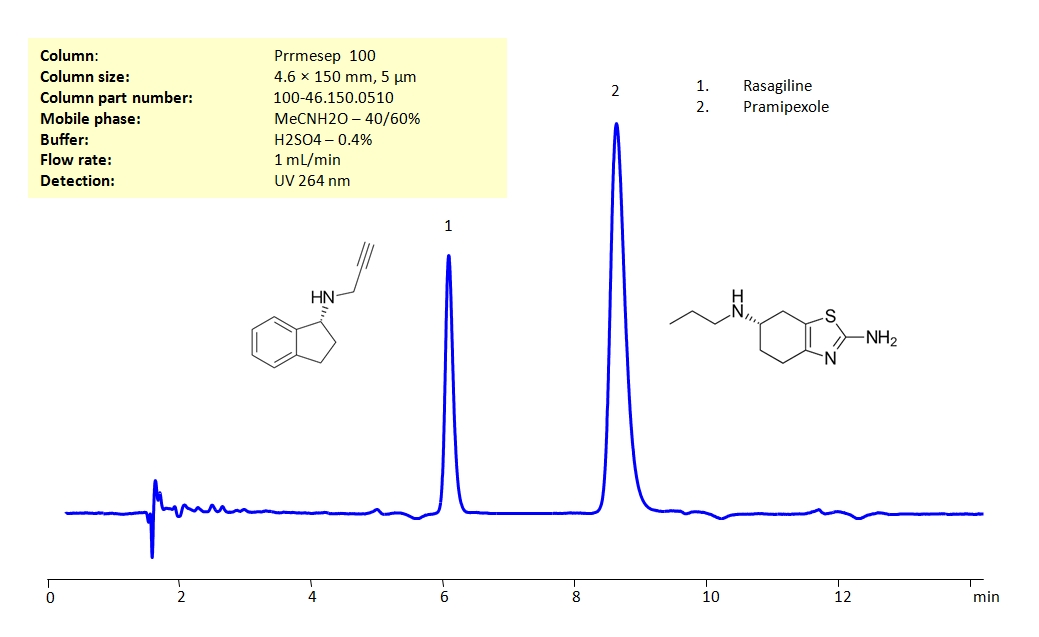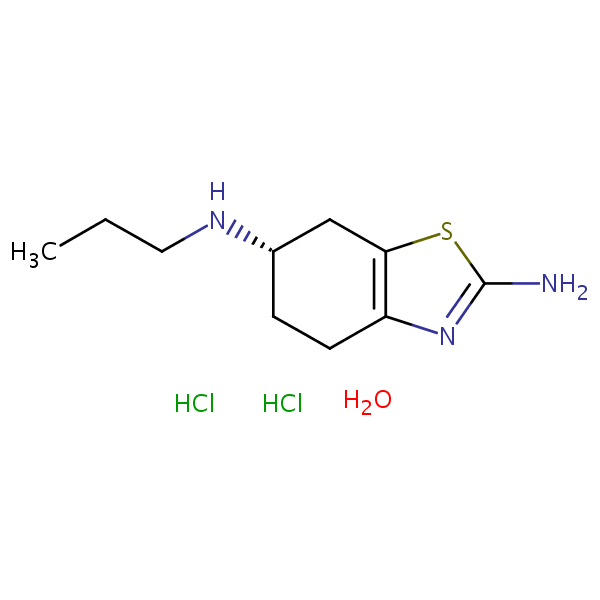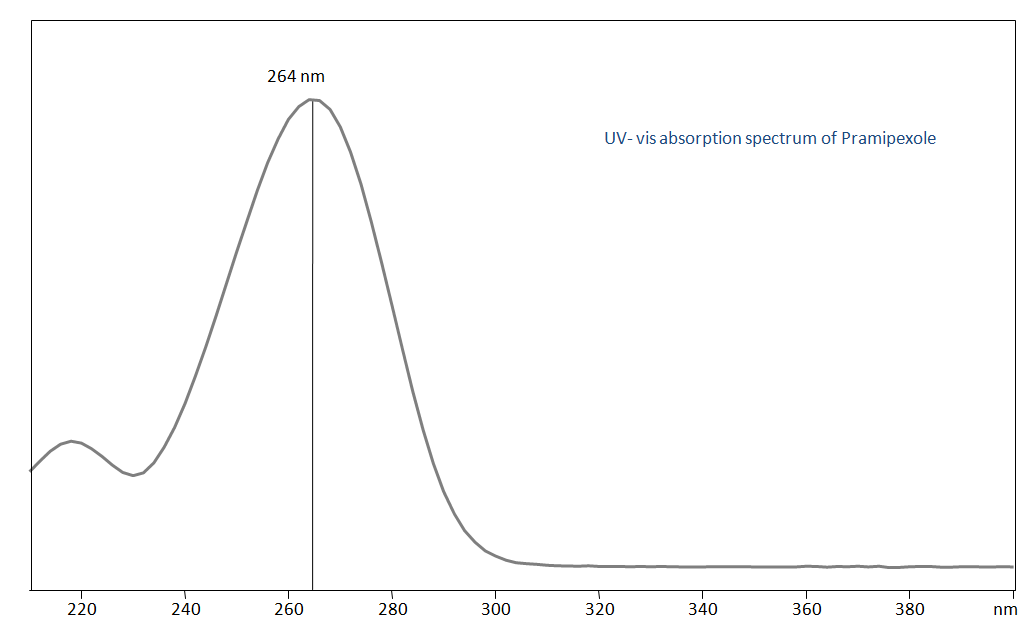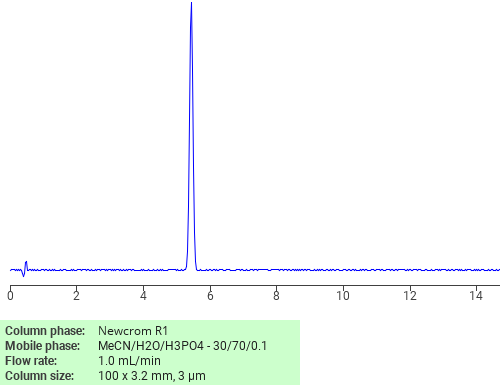| CAS Number | 191217-81-9 |
|---|---|
| Molecular Formula | C10H21Cl2N3OS |
| Molecular Weight | 302.261 |
| InChI Key | APVQOOKHDZVJEX-QTPLPEIMSA-N |
| LogP | 1.59 |
| Synonyms |
|
Applications:
HPLC Method for Simultaneous Analysis of Rasagiline and Pramipexole in Tablets on Primesep 100 Column
May 5, 2021
HPLC Method for Pramipexole dihydrochloride monohydrate, Rasagiline on Primesep 100 by SIELC Technologies

High Performance Liquid Chromatography (HPLC) Method for Analysis of Rasagiline and Pramipexole
Rasagiline and Pramipexole are marvels of modern science, giving patients with Parkin’s disease a way to treat their symptoms. Interestingly, both work slightly differently. Rasagiline prevents dopamine metabolism by permanently binding to the enzyme that breaks down dopamine, monoamine oxidase-B (MOA-B), while pramipexole binds to dopamine receptors and activates them, mimicking dopamine itself.
These drugs can be detected in the low UV regime. Using a Primesep 100 reverse-phase column and a mobile phase consisting of water and acetonitrile (MeCN) with a sulfuric acid (H2SO4) buffer, Rasagiline and Pramipexole can be separated, measured, and analyzed. This analysis method can be UV detected at 264 nm.
| Column | Primesep 100, 4.6 x 150 mm, 5 µm, 100 A, dual ended |
| Mobile Phase | MeCN/H2O – 40/60% |
| Buffer | H2SO4 – 0.4% |
| Flow Rate | 1.0 ml/min |
| Detection | UV, 264 nm |
| Class of Compounds |
Drug |
| Analyzing Compounds | Pramipexole dihydrochloride monohydrate, Rasagiline |
Application Column
Primesep 100
Column Diameter: 4.6 mm
Column Length: 150 mm
Particle Size: 5 µm
Pore Size: 100 A
Column options: dual ended
Rasagiline

Separation of Pramipexole dihydrochloride monohydrate on Newcrom R1 HPLC column
February 16, 2018
Pramipexole dihydrochloride monohydrate can be analyzed by this reverse phase (RP) HPLC method with simple conditions. The mobile phase contains an acetonitrile (MeCN), water, and phosphoric acid. For Mass-Spec (MS) compatible applications the phosphoric acid needs to be replaced with formic acid. Smaller 3 µm particles columns available for fast UPLC applications. This liquid chromatography method is scalable and can be used for isolation impurities in preparative separation. It also suitable for pharmacokinetics.
Application Column
Newcrom R1
The Newcrom columns are a family of reverse-phase-based columns. Newcrom A, AH, B, and BH are all mixed-mode columns with either positive or negative ion-pairing groups attached to either short (25 Å) or long (100 Å) ligand chains. Newcrom R1 is a special reverse-phase column with low silanol activity.
Select options




